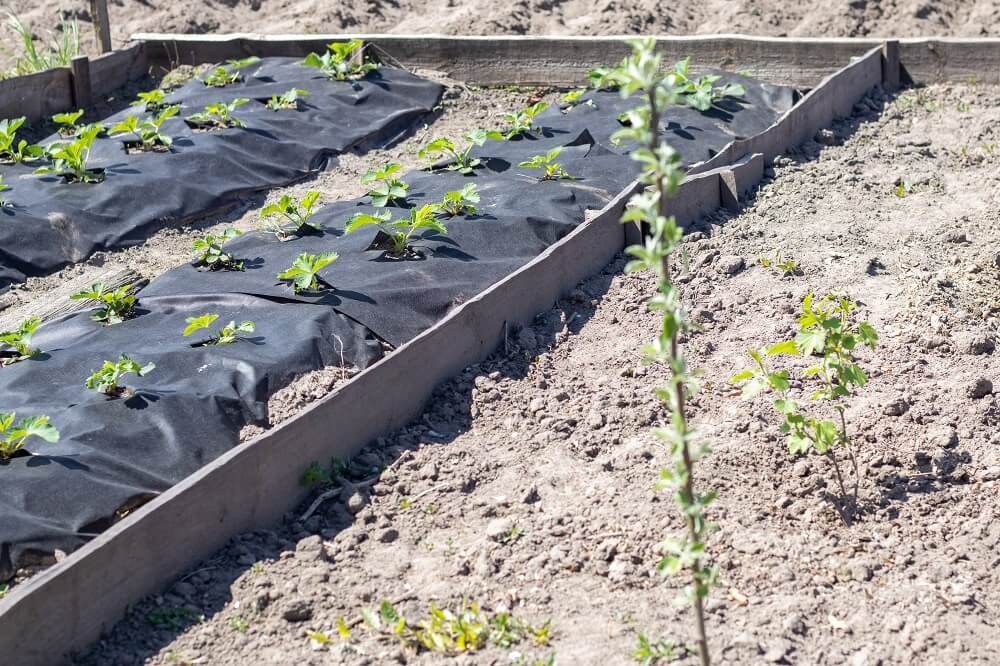

What is agro-textile? It is a material mainly used in agriculture and horticulture, which has a variety of protective and supportive functions. It is a special fabric made of polypropylene, characterised by high strength and air and water permeability. Thanks to these properties, agro-textile becomes an excellent tool in crop management and plant care. Agrowoven fabric is available in different thicknesses and colours, allowing it to fulfil different functions. Its eco-friendliness is also important — the polypropylene from which it is made is a recyclable material. In addition, the agro-textile does not contain any harmful chemicals, which makes it safe for the health of the plants. By choosing this material, farmers and gardeners can count on the protection of their crops and optimal growing conditions throughout the season.
What does agro-textile give? Above all, it is used for weed control — this special fabric effectively blocks the light that is necessary for the growth of unwanted plants, while allowing air and water to flow freely into the soil. This allows crops to grow without competition for resources. To which still serves agro-textile? It has the function of protecting the soil from erosion and also helps to maintain an even moisture content, which is crucial in dry periods. In addition, it can be used to protect plants from harmful weather conditions such as frost, strong winds or hail. In winter, properly spread agro-textile keeps the soil warm, which protects plant roots from frost. In the case of planting young trees or shrubs, the agro-textile can be used as a stabilising material, which supports the development of the root system by eliminating competition and ensuring optimal growth conditions. Whatever the season, the use of agro-textile helps to maintain plant health and crop efficiency.
Different types of agro-textile can be found on the market, allowing the material to be tailored to specific horticultural and agricultural needs. It is most often found in rolls or sheets, available in different widths and lengths. We distinguish among others. white winter fleece, which is used to protect plants from low temperatures. It is characterised by its greater thickness, which provides better thermal insulation, thus protecting plants from frost. In turn black agro-textile for summer is thin and used mainly as a barrier against weeds, stopping light and inhibiting the growth of unwanted plants.
Other types of agro-textile include green agro-textile, which often has technical functions, e.g. it can be laid on slopes, and brown agro-textile, used in more demanding terrain conditions. Some types of agro-textiles are also reinforced with additional layers to increase their resistance to mechanical damage. Each type has unique properties, adapted to different climatic conditions and cultivation needs. Thanks to the diverse range, the agro-textile becomes a versatile tool in agriculture and horticulture, enabling optimum crop management throughout the year. As a result, agro-textiles are an invaluable support for professional farmers and amateur gardeners, offering a wide range of applications tailored to specific needs.
To maximise the potential of the agro-textile, it is important to apply it correctly. First of all, prepare the area thoroughly — remove any weeds and level the soil, which will ensure the fabric is laid evenly. Then spread the nonwoven agro-textile directly over the prepared area, making sure that the fabric adheres tightly to the soil. The edges of the nonwoven agro-textile can be fixed with pegs, which will prevent the material from moving in the wind.
What does the agro-textile look like when laid correctly? It should be evenly spread with no creases or folds that can allow weeds to grow. It is also important that, when making plantings, you cut holes in the agro-textile as small as possible to minimise loss of effectiveness. Remember that the agro-textile needs to be monitored regularly, especially after heavy rain or strong winds, and any misalignments should be corrected immediately. With these practical tips agro-fibre will become an indispensable tool in your garden, effectively promoting plant growth and health.
The answer is a definite yes. Thanks to its versatile properties and diverse applications, agro-textile brings real benefits in both horticulture and agriculture. What the agro-textile offers? First of all, it effectively prevents the growth of weeds, which allows for better development of crops and increases yields. In addition, the properties of the agro-textile, such as air and water permeability and the ability to retain moisture in the soil, significantly improve plant growth conditions, minimising the need for frequent irrigation.
By investing in agro-fleece, gardeners and farmers can count on protecting their crops from adverse weather conditions such as frost, strong wind or hail. It is an indispensable tool in maintaining the health of the plants all year round, regardless of the season. In addition, the agro-textile shows great durability and is eco-friendly, making it safe for the environment and recyclable. Taking all these aspects into account, an investment in agro-textile becomes not only cost-effective, but also beneficial, enabling efficient crop management and optimising plant growth. It is an investment that brings tangible benefits to every gardener and farmer.